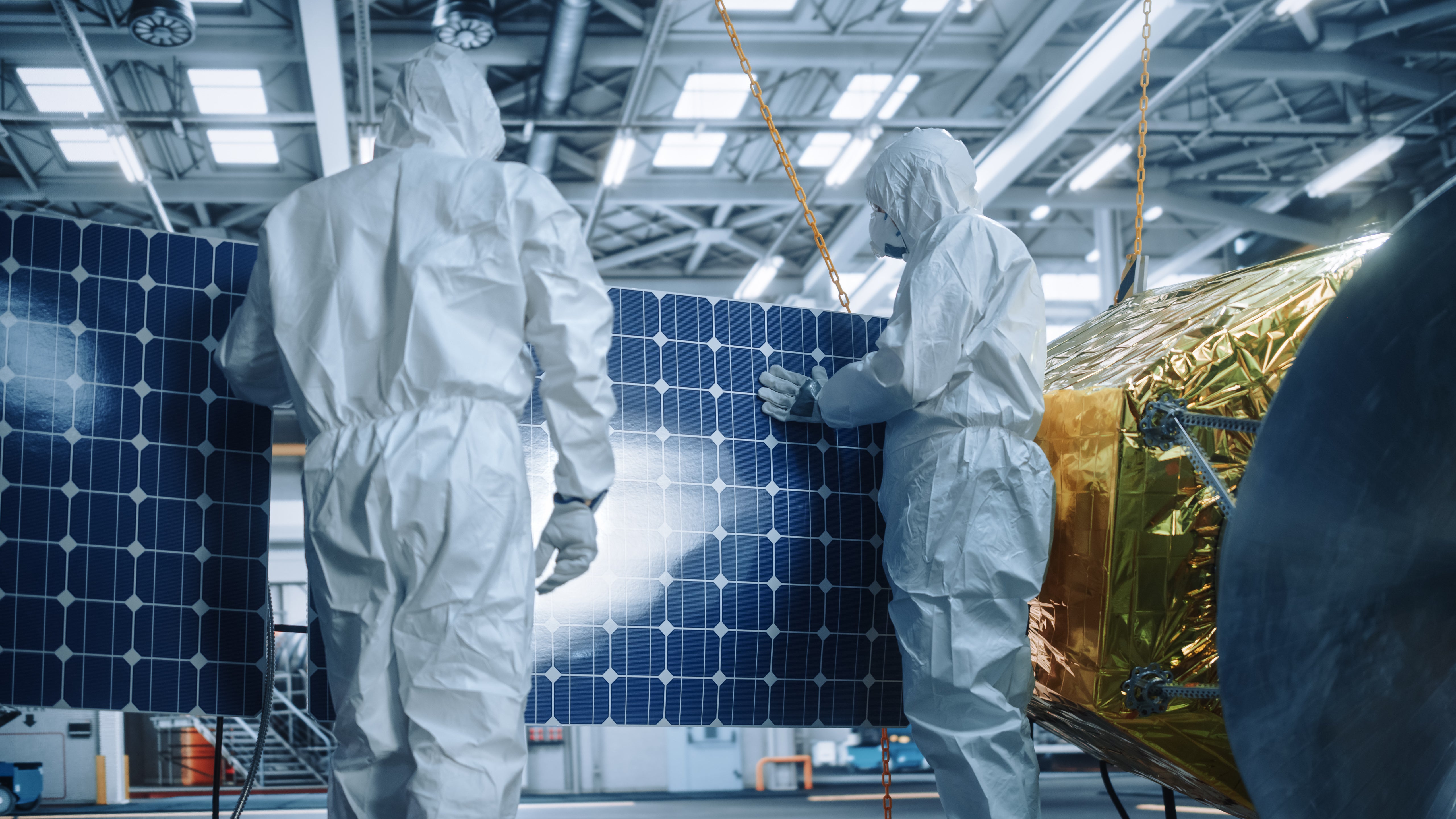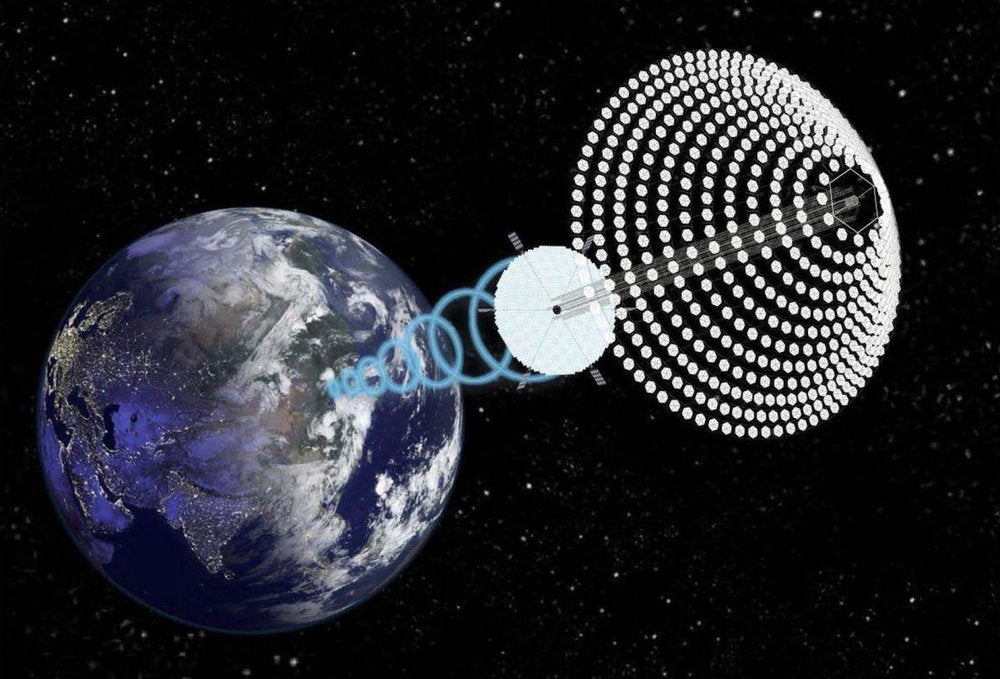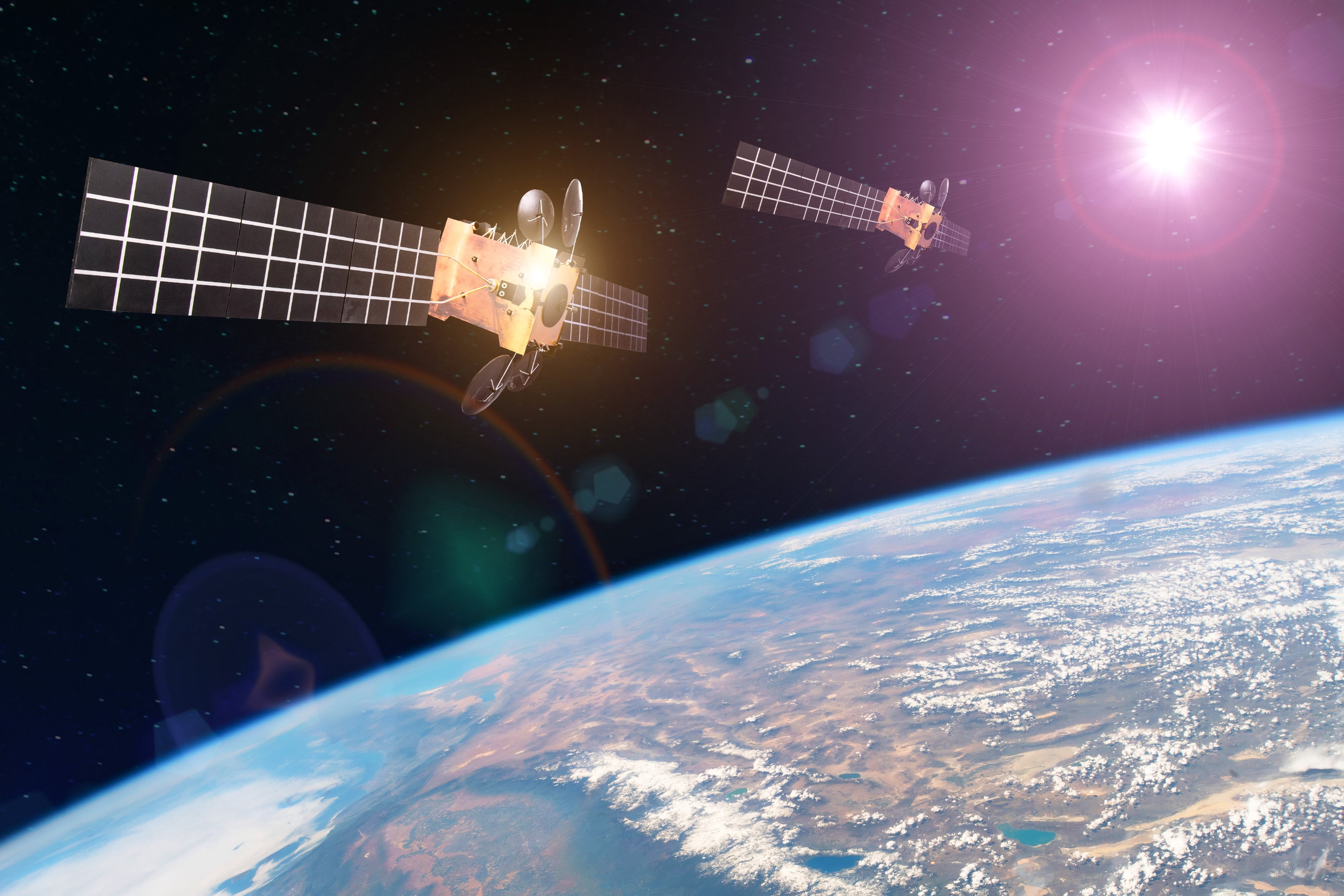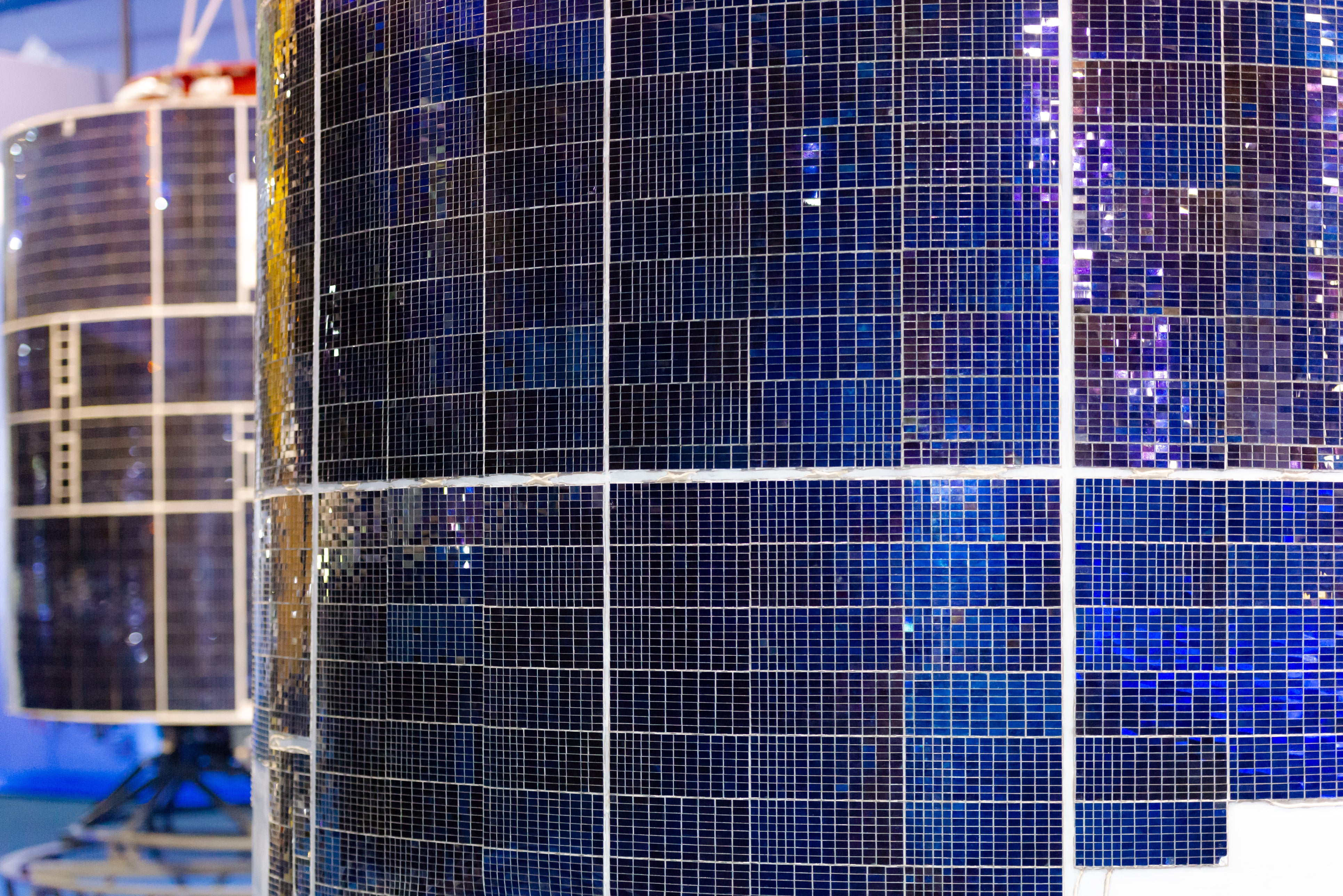Could orbiting solar power stations be the way to a net zero future?
When Isaac Asimov created the idea in the 1940s it was simply science fiction, now harvesting solar energy from Earth’s orbit could be a possibility, albeit an expensive one, writes Steven Cutts


The energy crisis is anything but a new phenomenon. Over time, the political motivation for new technology may change but for the scientific community the challenge remains the same. Research into alternative energy costs money and there’s nothing like an armed conflict to get the politicians on your side.
In the mid 1970s, they were trying to find the answer to the Yom Kippur war. By 1980, it was a reaction to the Islamic revolution in Iran. It was into this foray that the space industry decided to put its oar in the water and suggest that humans would be able to produce limitless energy in outer space and then beam it back down to Earth with no pollution and zero cost.
The Apollo project had just finished, and the rocket scientists were at a loose end. For this and other reasons, the American space agency Nasa got into orbiting solar power in a big way and an awful lot of optimistic reports were written about the possibility of saving the world by devices in geostationary orbit. Such an option would have neatly avoided such pesky problems as Opec (the Organisation of the Petroleum Exporting Countries), the new government in Iran and organised labour.
Times change, but the underlying priorities of western governments don’t. Predictions of melting icecaps are another chapter in the same saga. In some respects, it doesn’t matter. Before we had climate change we had wars for oil, acid rain, trade imbalances and runaway inflation. Even if the Donald Trump theory of climate change turns out to be right, there are so many other reasons to look for new energy sources that we need to look for them anyway. Right now, if we had 50 per cent of our power from renewables, President Putin would be out of a job.
So what about the idea of making energy in Earth’s orbit? What happened to that?

In essence, the plan calls for the construction of a massive solar power array in outer space. Instead of electrical cables, we’d transmit the energy back down to Earth using a radio antenna and receive it on the Earth’s surface using a large microwave receiver. There, the resultant electricity would be fed into our domestic power grid, freeing us from the need for nuclear power, fossil fuels and a lot of other things.
The idea itself isn’t new. The science fiction writer Isaac Asimov is usually credited as being the first person to suggest the concept in the 1940s, but it wasn’t until the 1970s that it started to be taken seriously. It sounds outlandish, but in recent years, the idea has actually gained credibility. In the last 10 years alone, the asking price for a photovoltaic solar panel has fallen by more than 90 per cent. Solar power that once seemed completely out of reach now appears mundane and there are plenty of ex-council houses in England that are adorned with space-age panels, all of them doing their bit to drive down energy prices.
The intensity of sunlight in outer space is many times greater than here on Earth. In addition, a solar farm in geostationary orbit would be exposed to almost continuous sunlight with no variation
During 2021, as much as 4 per cent of UK electrical power was derived from solar power. In spite of our high latitude and dull climate, it’s still possible to produce a significant proportion of our power from this new and rapidly evolving technology. By 2050, it’s likely that more than a third of global energy will be generated from the sun and the significance of this breakthrough cannot be overstated. Remember that sunlight requires no down payments, it makes no difference to our import-export balance and is available to almost all the peoples of the world, irrespective of their geological fortunes.
Even before you start to look at the arithmetic on orbiting solar power, you can be forgiven for feeling apprehensive about the scale of this challenge. Orbiting solar power is without doubt the most audacious solution the problems of energy supply here on Earth. Any attempt to build a solar array in outer space would require that the solar panels themselves be blasted through the stratosphere on some enormous rocket. Once they have arrived in low-Earth orbit, either vastly capable robots or obedient space navvies will asked to bolt them together in zero gravity.
The good news is that the intensity of sunlight in outer space is many times greater than here on Earth. In addition, a solar farm in geostationary orbit would be exposed to almost continuous sunlight with no variations for such awkward problems as cloud cover or the changing seasons. The sun would be eclipsed for about 1 per cent of the 2-hour day night cycle but apart from that, output would be predictable, substantial and available for 99 per cent of the time.

The concept has become so attractive that several governments around the world have commissioned studies into the feasibility of actually building a solar power station in outer space with the Frazer Nash Consultancy group submitting their own report to the British government in 2021: “De-risking the pathway to net zero.”
Fraser Nash calls for a small orbital demonstrator by 2031 and a full-scale power station by 2040. The full-scale version would be about 1,700m in diameter, making it by far the largest structure ever assembled in outer space. On the surface of this planet, it would weigh 30,000 tonnes. Once deployed, it would generate 3 gigawatts, pretty much around the clock. Since some degree of wastage is inevitable during transmission and retrieval, the same system would only deliver about 2 gigawatts to the National Grid. In order to receive the energy transmitted from geostationary orbit, a 7x13km elliptical grid would be constructed back on Earth where about 2 gigawatts of power would be fed into the main grid.
Many have questioned the environmental impact of the actual downloading of energy on this scale, but the estimate is for the receiving grid to field 245 watts/sq m on Earth. This is about a quarter of the intensity of the sunlight at the equator although it does represent a significantly different wavelength and there are bound to be concerns about safety.
How close is such a proposal to becoming a reality? Well, there are a number of obstacles to be overcome before we could really do it.
Orbiting solar power plants are critically dependent on the development of very light weight solar panels. We live in an age when technologies that were once regarded as exotic are now regarded as mundane. Low-cost photovoltaic panels are no longer tailor made for high profile moon shots, you can buy them on Amazon at an entirely reasonable price.

Most modern-day solar panels convert about 20 per cent of the energy in sunlight into electricity. Even this is a massive improvement on the first generation panels. However, next generation solar panels will do better than this. Several groups are looking at perovskites as an alternative to silicon in this role and the British based company, Oxford PV, are about to start producing a 30 per cent efficient solar panel in a new factory, just outside Berlin.
Remember that the intensity of solar radiation is much greater in outer space than it is here on Earth. In addition, static panels on the Earth’s surface only reach peak output when the sun is highest in the sky, usually around midday. Output at dawn and in later afternoon is far more disappointing. Not only does a solar farm in geostationary orbit avoid both the day-night cycle and the obstructive effects of the Earth’s atmosphere, but it is able to slowly rotate its panels to keep them perpendicular to the sun’s rays at every stage in its orbit. In deep space, solar output is almost relentless.
The largest space based solar array so far is the power supply for the International Space Station, in itself an impressive piece of engineering. However, the ISS is trapped in a low-Earth orbit about 250 miles in altitude and whizzing along at around 5 miles/s. Even if it were capable of beaming back a signal to the Earth, it wouldn’t stay in the sky long enough to be able to transmit any useful power.
There is however, another orbit where solar power generation would work much better. Geostationary orbit is a full 36,000km above our heads and enables a spacecraft to maintain the same position over the equator. This orbit has long been the home of most of our telecommunication satellites. If you subscribe to satellite TV, you’re probably receiving a signal from a satellite in exactly this height. Just about all of these satellites generate their own electrical energy using photovoltaic solar panels and at 36,000km, the sun itself will only be occluded for a few minutes every day. During this short time period, the satellites will maintain operations using on board batteries which are then recharged as soon as the sun reappears.
Some years ago, the government of Denmark decided to invest heavily in wind turbines. The British didn’t
The second obstacle to orbiting solar power is the practical task of launching such a system into orbit. While the sheer numbers of large satellites now in orbit appear to make it seem easy, the cost of individual space launches have – for many years – left orbiting solar power in the realm of science fiction. However, in recent years a number of groups claim to be developing new space launch systems that will be able to send men and material into low-Earth orbit for a fraction of the price of earlier rockets. Most prominent amongst these are Blue Origin (led by Jeff Bezos) and Space X (founded by the still more controversial figure of Elon Musk).
Musk’s forthcoming “Starship” vehicle looks set to hoist a staggering 150 tonnes of cargo into low-Earth orbit. This enables us to calculate that an assembly weighing 30,000 tonnes would require 200 separate launches by Starship. Given that Starship is a reusable vehicle, this shouldn’t be too difficult. Some 200 launches is nothing in comparison to the sort of cadence that Musk and his entourage are now predicting for Starship. What was once blue sky thinking has evolved into a project worthy of consideration.
Transferring a 30,000-tonne solar farm from a 400km to a 36,000km orbit isn’t going to be easy. Similarly, the not insubstantial task of keeping it on station is more demanding than most people realise (they always tend to drift) but both of these tasks could be done using ion drive. In effect, the final construct that would spiral upwards over a period of many months. The big uncertainties with this kind of project is the cost of individual space launches. How far can the likes of Musk really drive down launch costs? Musk himself is characteristically bullish, but the technology is still in its infancy and at this stage we just don’t know.

Finally, we should remind ourselves that that photovoltaic panels don’t last forever. In the course of time, they will degrade and in the environment of deep space, they will also be exposed to damage by micro meteorite impacts.
Some years ago, the government of Denmark decided to invest heavily in wind turbines. The British didn’t. To this day, I’m not entirely sure why, but it goes without saying that the British and other governments are now handing over an absolute packet to Copenhagen just for the privilege of using their IP. It would be misleading to suggest - even for one moment -that the British were incapable of developing its own wind turbine technology. They were. In short, whoever leads a research project of this kind goes on to dominate the industry and has the option of exporting their system on a massive scale. If orbiting solar power is indeed viable, then someone is going to do it in the course of the next 20 years and whoever does it first looks set to make a lot of money. Of course, one could equally argue that it makes sense for governments to cooperate, especially for a project as immensely expensive as this one. As things stand, China, Japan, the United States and Britain are now all looking at this concept in great detail.
Not everyone is convinced. Veteran British engineer David Baker actually worked on the feasibility studies for exactly this kind of tech in the 1970s and can still remember the excitement and positivity of that era. I spoke to him quite recently and even he is sceptical.
“My own view of this is that it is massively compromised by the weight required for orbit. There are better and more economical ways to replace ground-based power stations.”
I’d like to see him proved wrong but the obstacles to a 2-gigawatt orbiting solar power plant are still formidable. Ordinarily, in aerospace projects, costs increase way beyond the original estimate. Finishing with money left over is almost unknown. If the latest estimate of a 2-gigawatt orbiting solar power station is £16bn, it would be sensible to double that figure before you go any further. This kind of tech is coming and it’s becoming more credible with every passing day, but it will take huge political will and investment to make it happen.




Join our commenting forum
Join thought-provoking conversations, follow other Independent readers and see their replies
Comments